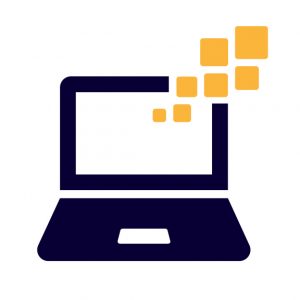10 Technologies and Platforms
Learning Management System (LMS)
Your choice of technologies and platforms to use will depend on how the micro-credential will be delivered.
If it will be delivered solely online and asynchronously, you will want a learning management system (LMS) that ensures learners access to required instructional materials and resources. You will want to arrange opportunities for automated “real-time” feedback through both formative and summative assessments. Additionally, the LMS used should be able to issue either a digital badge or certificate of completion once the learner has successfully completed their micro-credential.
To create and deliver micro-credentials, most institutions should be able to use the use the same LMS they have already adopted for many of their online or hybrid courses. This is a discussion that needs to occur with the institution’s IT department and the current LMS provider.
Digital credentialing platforms
Another technology requirement is a digital credentialing platform. This is needed to create and issue credentials to learners.
The platform chosen must be able to display essential information, such as the name of the micro-credential, a description of it, and the skills learned. As well, it needs to provide the name of the institution issuing the credential and the date it was completed.
Data security is an important to consider when choosing a digital credentialing platform. Some platforms use blockchain security, while others have different means of protecting data. The security measures are needed to ensure validity and verifiability (i.e., proof that the credential is authentic and cannot be replicated or altered).
Resources to support choosing a digital credentialing platform
Badge Alliance (2022). Badge platforms. Badge Wiki. https://badge.wiki/wiki/Badge_platforms
Dimitrijevic, S., Devedzic, V., Jovanovic, J. & Milikic, N. (2016). Badging Platforms: A Scenario-Based Comparison of Features and Uses. In D. Ifenthaler, N. Bellin & D. Mah (Eds.), Foundation of Digital Badges and Micro-credentials. Springer International Publishing (pp. 141-161). DOI: 10.1007/978-3-319-15425-1_8
Transcribing micro-credentials and student Information Systems (SIS)
Integrating the student information system is a complicated process that requires extensive collaboration among many inter-institutional departments. These include, but are not limited to:
- Registrar
- Information technology
- Online education or continuing education
- Teaching and learning centre (design team)
- Marketing team
There are significant internal departmental operations and processes with the integration system that impact other departments and their ability to meet required expectations, timelines, and project deliverables.It is essential that planning take places early in the micro-credential design and development phase so that the affected departments can plan for the capacityandhumanresources neededtoeffectively execute this important task.
Using a centralized location, for example a Microsoft Teams channel, allows each department to contribute and upload specific processes and operations for everyone to adhere to. As well, regular weekly meetings should occur each week with each department to clearly communicate “next steps” and action items, and to ensure appropriate capacity and human resources are available.
Platforms for learners to share micro-credentials: Proof of capabilities
Micro-credentials are digital and can be posted to a learner’s e-portfolio. Once posted, they are “owned” and managed by the learner.
An e-portfolio is a type of “digital wallet.” As a micro-credential or certificate is earned, it is automatically deposited in the learner’s wallet, allowing the learner to control who can see which credentials when. It is also possible for the issuer to put a time limit on the use of the micro-credential or certificate, ensuring that outdated knowledge and skills don’t continue to appear.
Most digital credentialing platforms conform to an open standard, which means that micro-credentials can be shared across multiple platforms. The open badge standard is free and provides the greatest flexibility for learners when evaluating the portability of a badge (IMS Global Learning Consortium, 2022 ). Credentialing platforms may also provide encrypted certification of a credential through the Ethereum blockchain (Chukowry et al., 2021) or an alternative digital security method such as the one used by Parchment, which can provide employers with the confidence that the credentials have not been altered. Institutions must consider whether this level of encryption is essential; the answer may come down to the demands of the market. If employers require blockchain institutions, the institutions may have no choice but to respond.
If a skill or competency becomes out of date—perhaps a new way of undertaking a specific process or competency becomes standard—it’s possible for the issuer to set an expiry date for that credential. For example, when the guidelines for CPR (cardiopulmonary resuscitation) changed in 2010, a digital CPR certificate issued before that date could be given an expiry date requiring the holder to update their skills and competencies (Contact North, 2020).
Platforms and the micro-credential ecosystem
Different platforms are needed to support elements of the micro-credential eco-system:
- Platforms that house micro-credential learning content (e.g., LMS).
- Platforms for issuers to create and issue credentials (e.g., a dedicated platform such as BC Diploma).
- Platforms for learners to display, curate, or share issued credentials as links or proxy copies (LMS, SIS, wallets, backpacks, passports, portfolios):
- MyCreds as a wallet.
- eCampusOntario Passport as a portfolio.
- LinkedIn as a social media sharing platform from wallets, portfolios, or direct from credential hosting platform.
- Platforms, technologies, and services for credential consumers to validate and verify credentials (validators).
- Platforms to house frameworks for alignment to competency models, standards, and other structured frameworks (OSN, EMSI, etc.).
- Marketplace platforms to choose micro-credentials to earn (e.g., eCampusOntario Micro- credential Portal).

